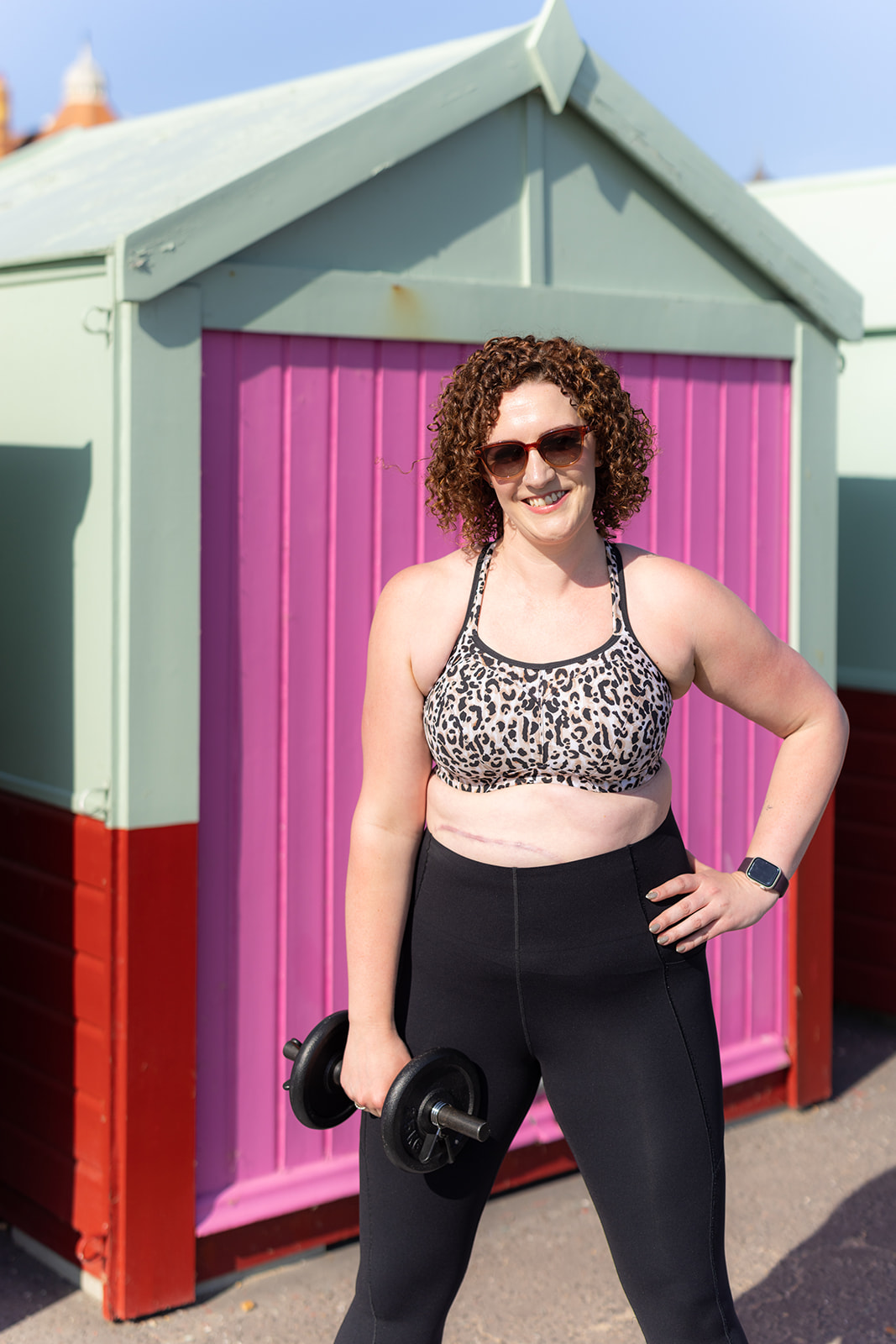I recently completed a consultation with a new client – a “get to know you” session which involves discussing current habits, hopes for the future, and ideas for what a person wants to get out of personal training. This client has “fat loss” on their list of goals, and that’s ok with me. There’s a big debate in the fitness space regarding whether or not this is acceptable, and we all have our own thoughts and policies, which I’ll discuss later.
During our discussion about fat loss, I asked my client how regularly they weigh themselves. They replied that they do this weekly, and that they see this as an improvement, as they used to weigh daily. I agreed that this is great progress (another of their goals is to unlearn and undo some habits ingrained by diet culture), and it got me thinking about how I can educate people to look beyond their scale weight in order to see progress. Here are some ideas…
Measure your body
I’ll freely acknowledge that this will be unhelpful for many people – part of choosing to avoid weighing is to support the idea of ditching “body checking”, which is the idea of regularly scrutinising the size and shape of our bodies (as well as other appearance-based features). Taking measurements does fall into this category, bur it is a useful tool for some people.
The benefit of taking measurements is that you notice the size and shape of your body changing, without attaching it to your weight. It’s worth remembering that, for a variety of reasons, the goal may in fact be to increase size, rather than decrease it, and measuring body parts is an ideal way to track this. We cannot spot-reduce fat, but we can selectively increase the size of our muscles.
Notice the progress of your exercise sessions
There are loads of ways to track progress in terms of your fitness. From well-recognised fitness assessments (such as how quickly you can walk or run a certain distance), to picking up on other nuances, there are all sorts of sport-specific ways to consider that you’ve taken a leap.
When it comes to lifting weights, there’s the obvious factor of being able to manage an increased load (and also to have improved your form, or complete a greater number of reps). It might also be that you can complete a wider range of exercises in general, or undertake more within a session. It could be that you find yourself being more efficient in the gym, due to understanding the place better. We can also get technical…
Improved body function thanks to fitness
This can get really nerdy, and there are so many things to look at. From your average resting heart rate away from sessions, to the quality of your sleep, plus much more besides. Many healthcare professionals will prefer to consider your blood pressure, waist/hip ratio, or the dreaded BMI (I really wish the medics would drop this one!).
My own favourite is heart rate recovery – how quickly after an exercise session your heart rate will return to what is a normal range for you, AND how quickly within a session (for example, between sets) your heart rate drops again. With weight training in particular, this is quite easy to observe – during a working set, or a circuit, you’ll typically see your heart rate rise in line with the amount of effort you’re putting in. During a rest interval, it should then drop again, and how quickly it falls back to a lower level (though it shouldn’t make it as far as your non-exercise rest rate) is a great indicator of recovery.
To put it more crudely – notice how quickly you begin to “feel” more relaxed between sets, and how soon your breathing returns to normal.
To weigh or not to weigh
As a coach, I’m not strictly anti-diet, and I’m not subscribed to a Health At Every Size (HAES) approach, but I do describe myself as flexible and compassionate. I know that not everyone is undertaking exercise in order to lose fat. I’m absolutely not here to make a judgment of anyone’s choices, and I give clients the space to set their own goals, with guidance and support from me if requested.
If a client tells me that they’d like to lose fat, and we agree that this is a reasonable goal for them, I then ask whether they’d like to monitor their weight alone, or with my support. If they request assistance, I will agree, and will also make it clear to them that they can change their mind on this at any time without question or complaint from me – it’s their goal, and the choice is always theirs.
The benefit of experience
I’ve rarely weighed during my own fitness journey. I have had the privilege of always being “straight sized” – that is to fit comfortably into “standard” sized clothing – which made it an easier choice for me. At the beginning, I didn’t want to know my own weight, so I avoided the scales. Later in my journey, I was curious to have the perspective in order to compare my own weight to the ones I was lifting (this can be particularly useful if you’re contemplating something like a pull up, in my opinion).
In general, I find it unhelpful to regularly step onto the scales. So I don’t. And that’s why I don’t expect you to either.
Like the sound of tracking progress in this way? Get in touch to discuss working together
